Abstract
Leitner, Felix (Michael Reese Hospital and Medical Center, Chicago, Ill.), Helen M. Sweeney, T. F. Martin, and Sidney Cohen. Induction of staphylococcal penicillinase by benzylpenicillin: effect of pH, concentration of ferrous ion and inducer, and duration of exposure of cells to inducer. J. Bacteriol. 86:717–727. 1963.—The kinetics of induction of penicillinase by benzylpenicillin in exponentially multiplying Staphylococcus aureus strain 55-C-1 were shown to vary with the pH. At pH 7.3 in the absence of free inducer, the rate of increase of penicillinase activity rapidly declined and came to a halt. At pH 5.4 to 5.5 and in the presence of optimal concentrations of Fe++, the penicillinase activity of the induced culture increased linearly with time for 2.5 or more generations, but the rate of increase usually declined eventually. Evidence was advanced to support the concept that the acidic pH and optimal Fe++ concentration maintain the induced formation of enzyme. The induced increase in penicillinase activity appeared 3 to 4 min after the addition of benzylpenicillin. The degree of induction of penicillinase varied with the duration of exposure of the staphylococci to the inducer and with the concentration of inducer. Maximal induction under our conditions was attained by exposure for 15 min to benzyl-penicillin at an initial concentration between 0.6 and 2 units/ml.
Full text
PDF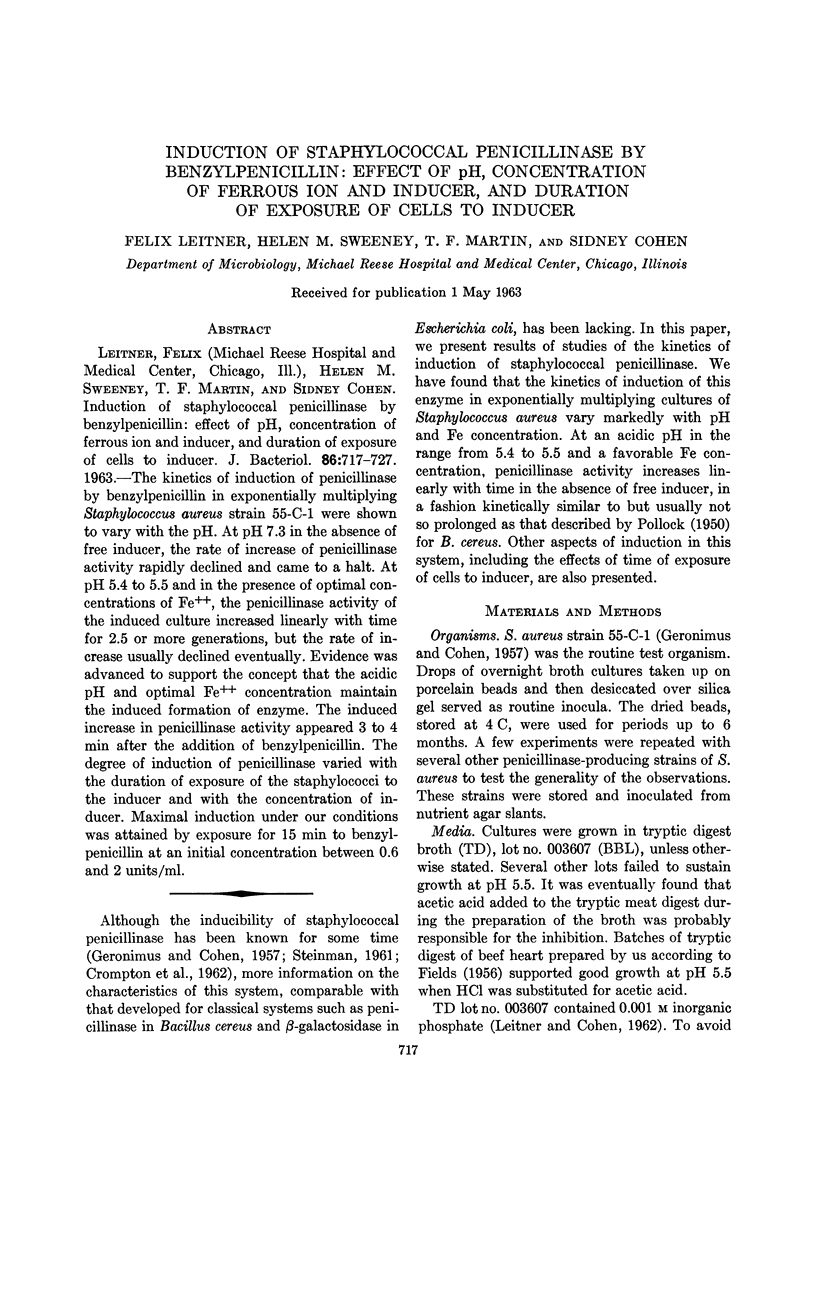
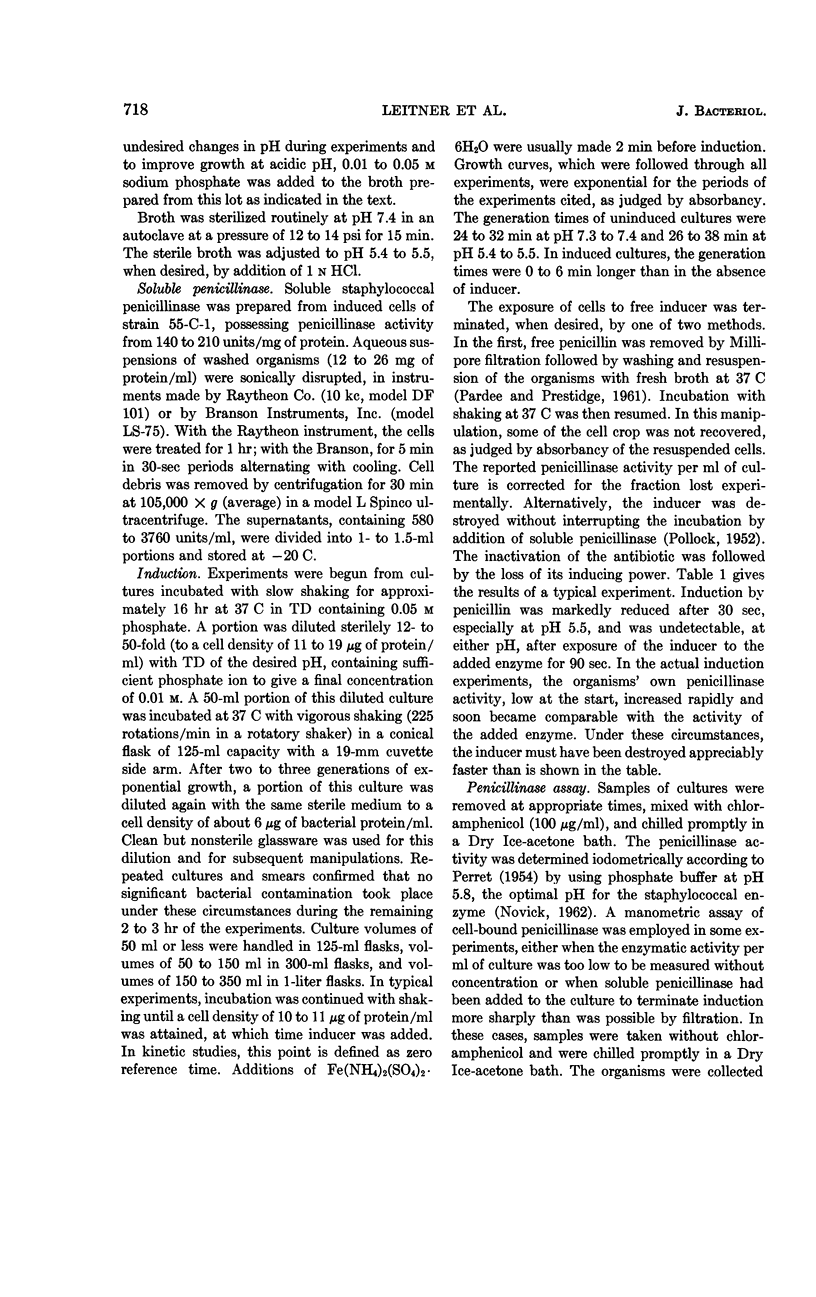
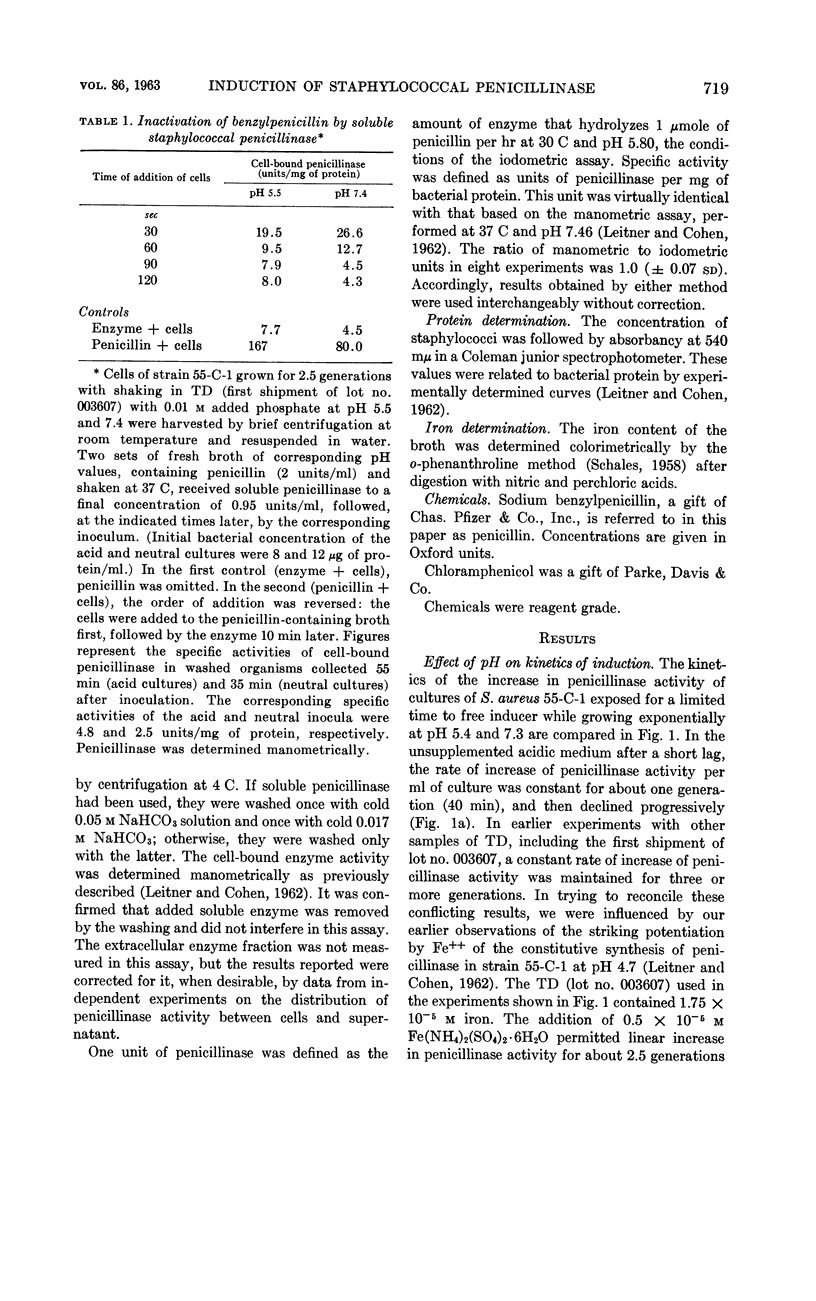
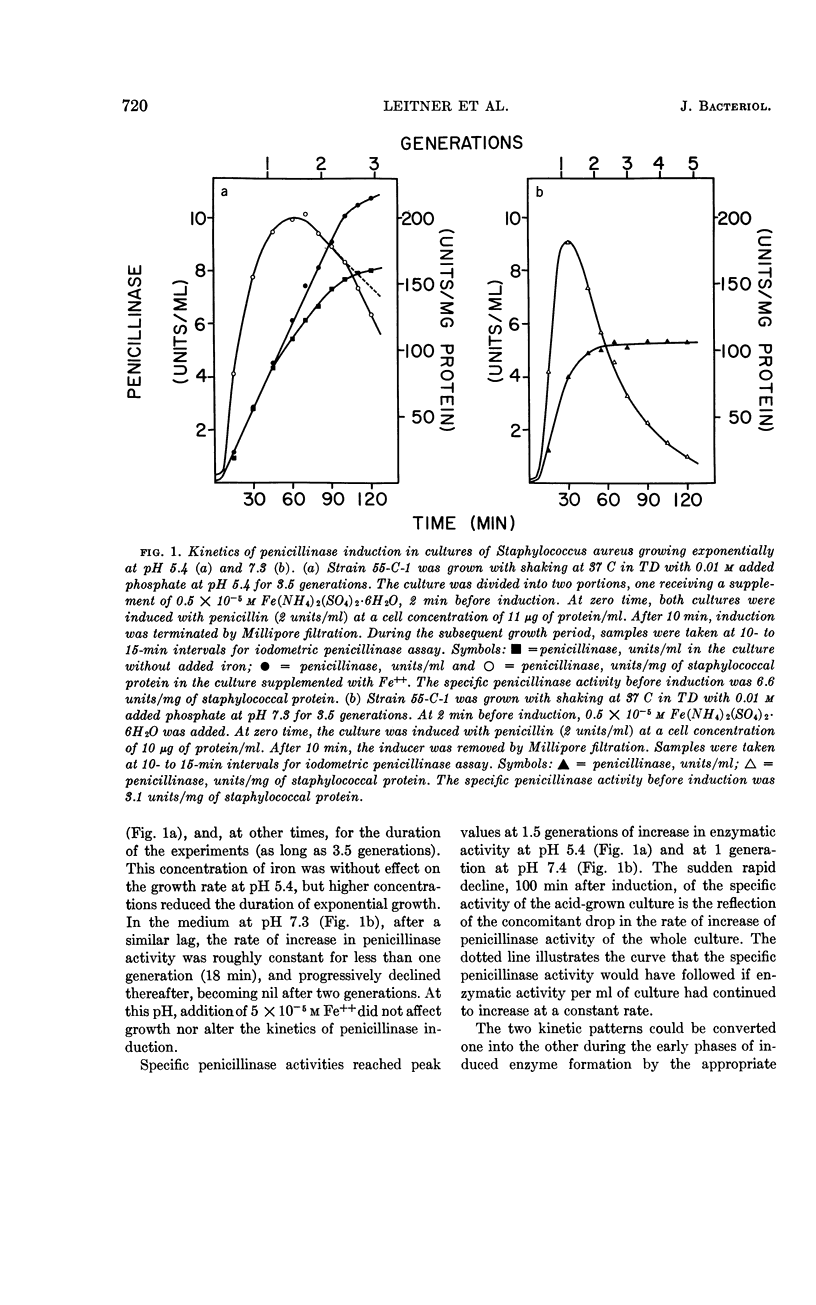
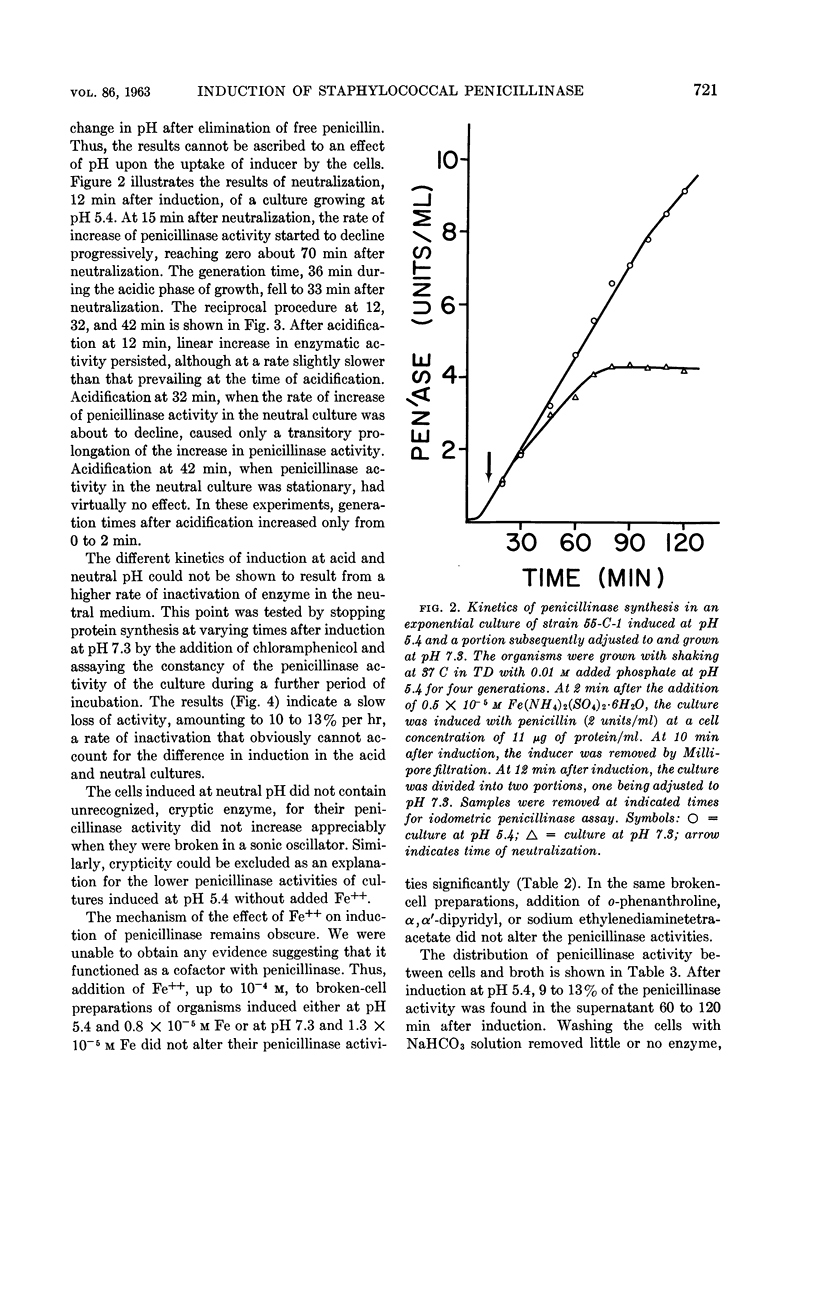
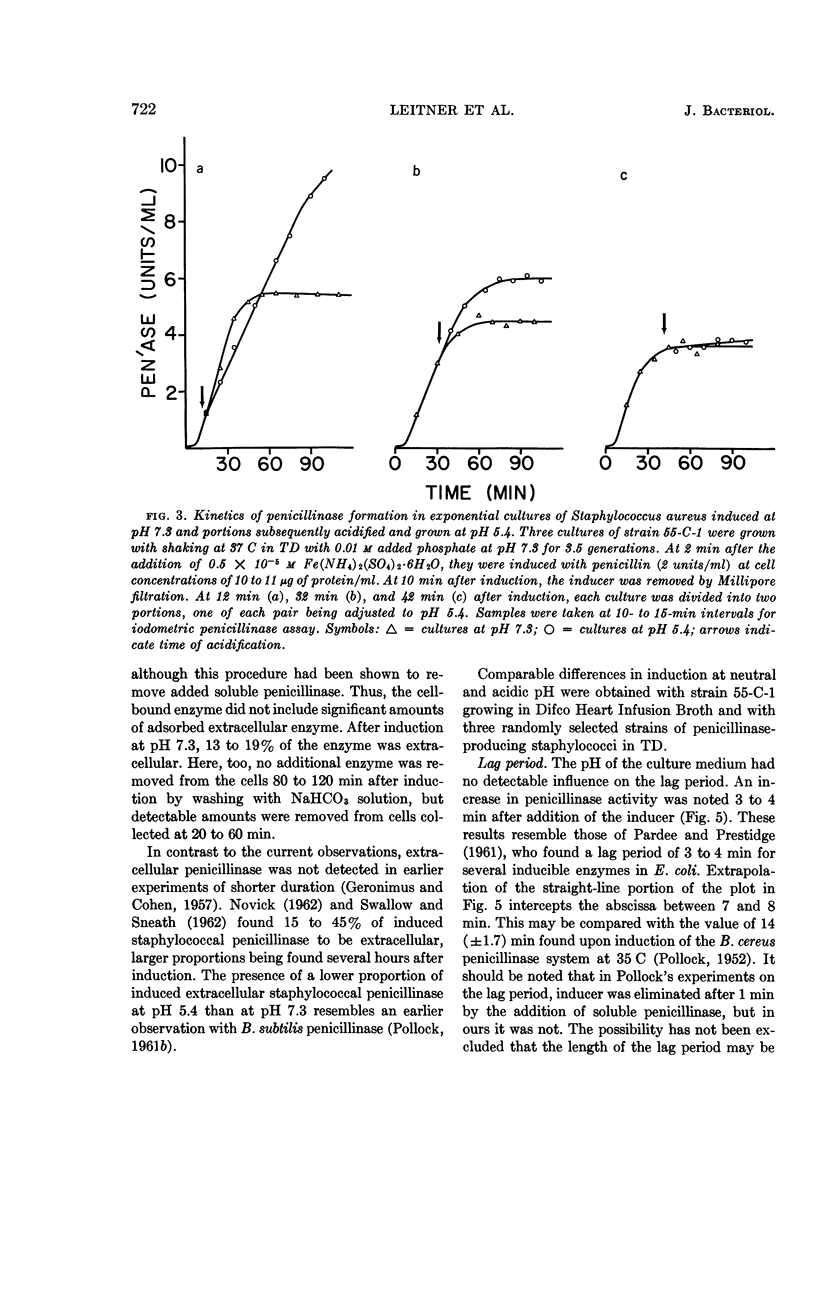
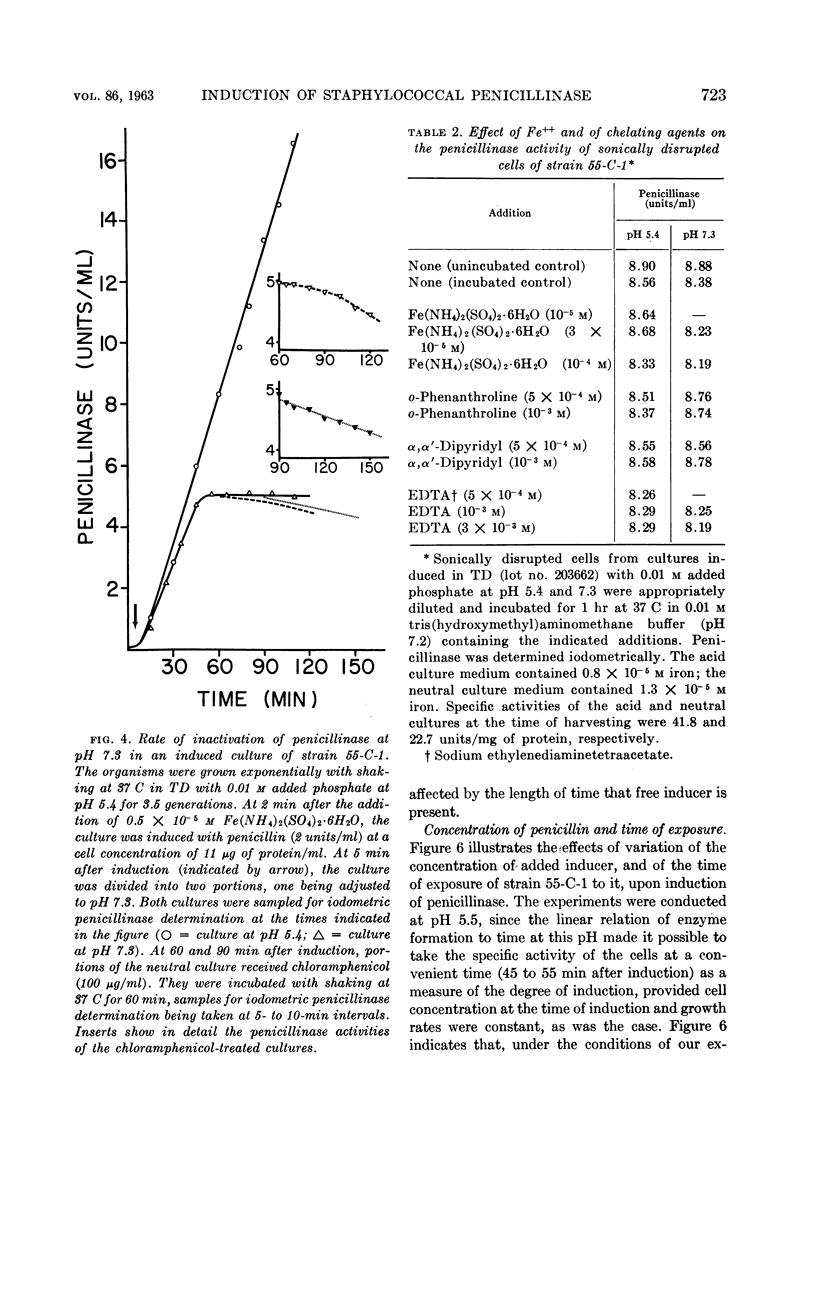
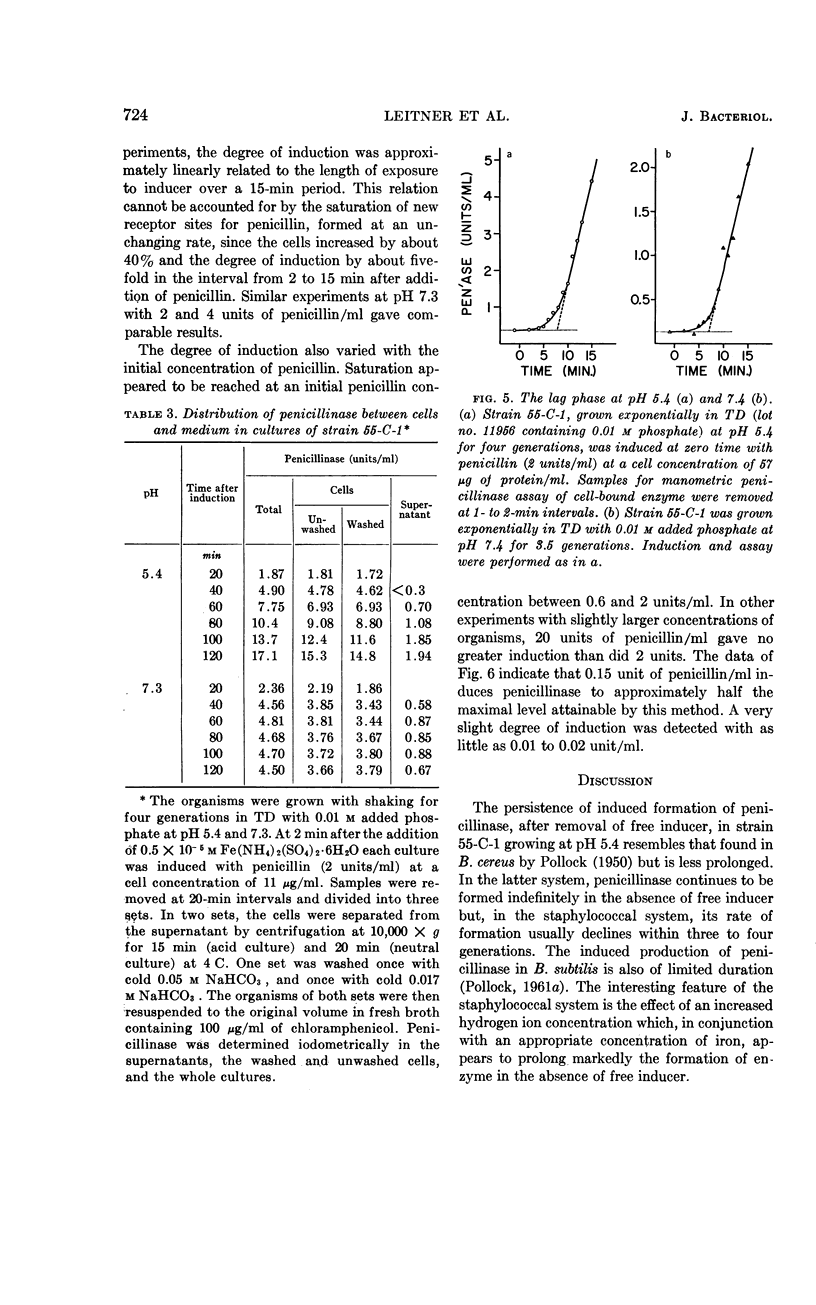
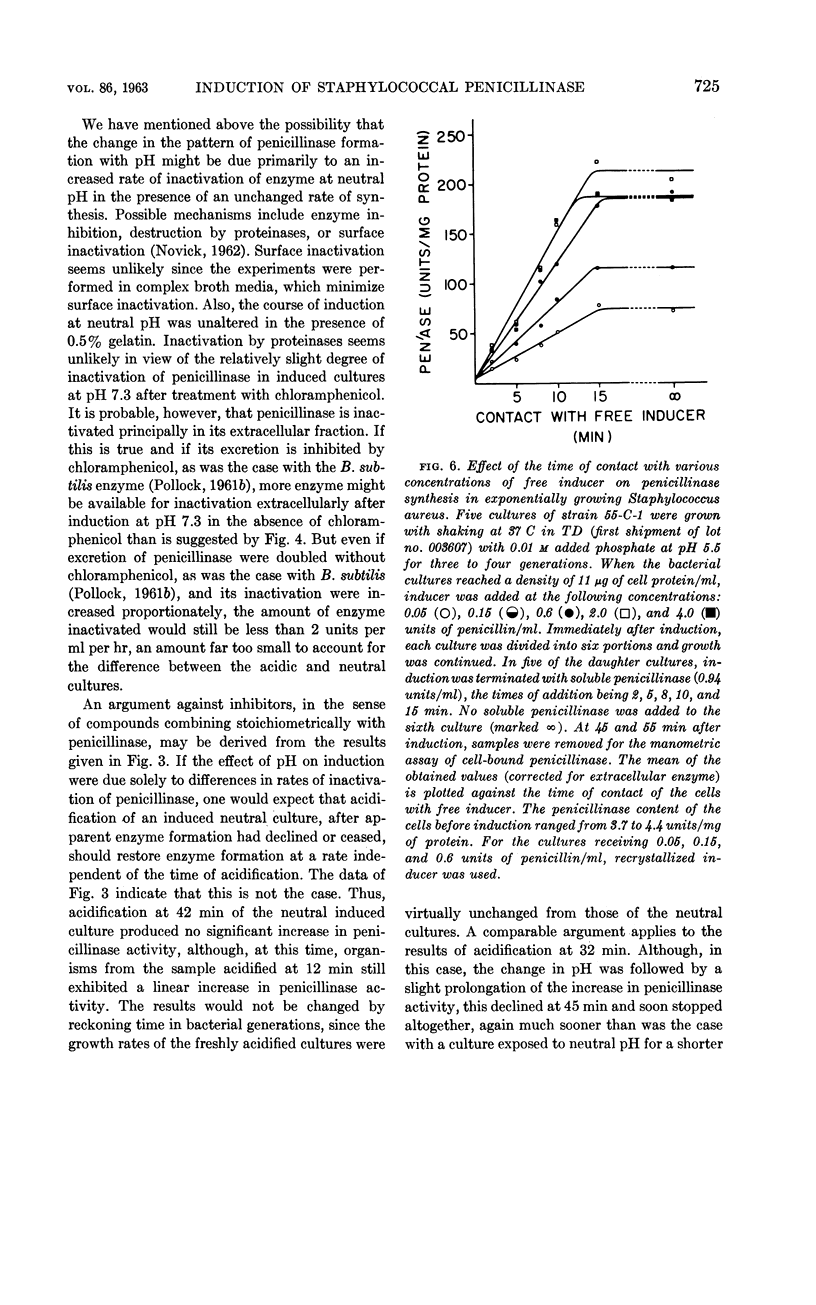
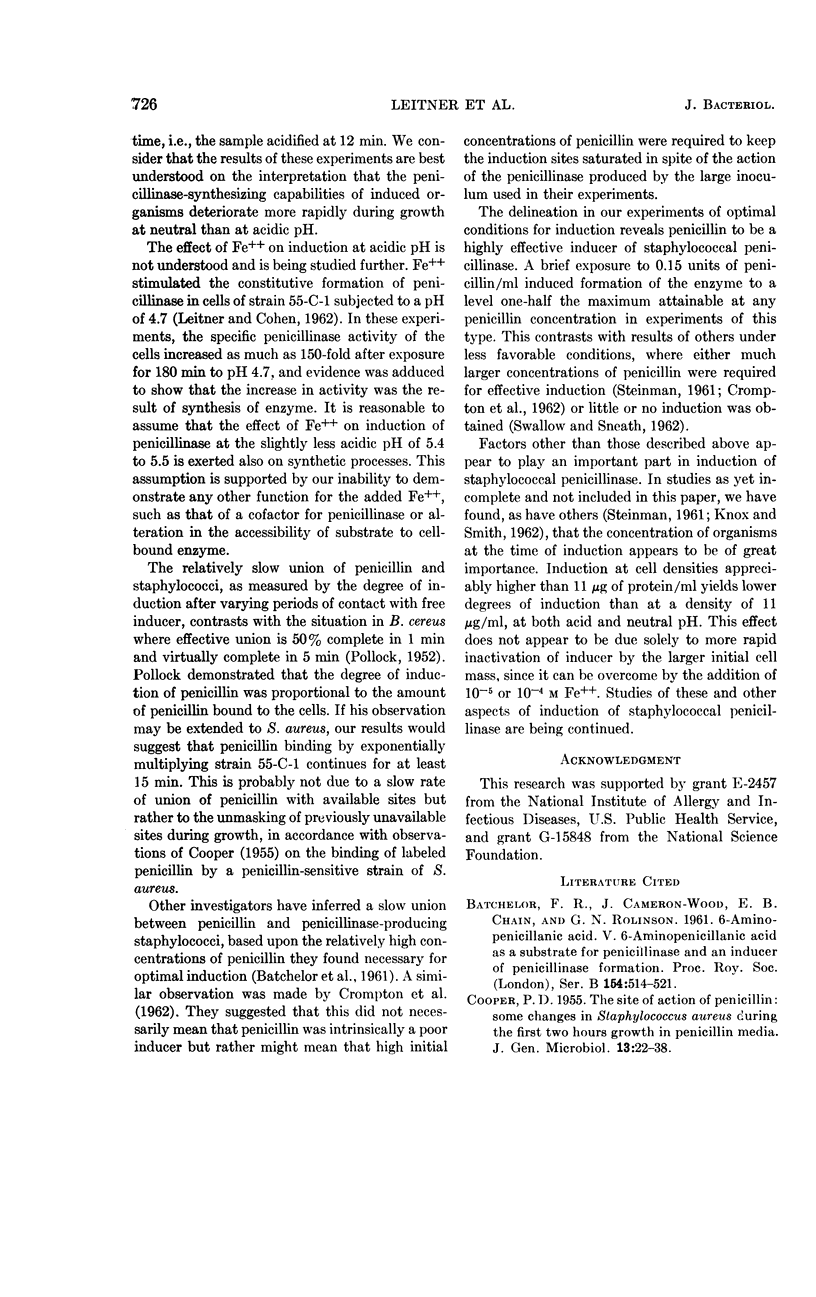
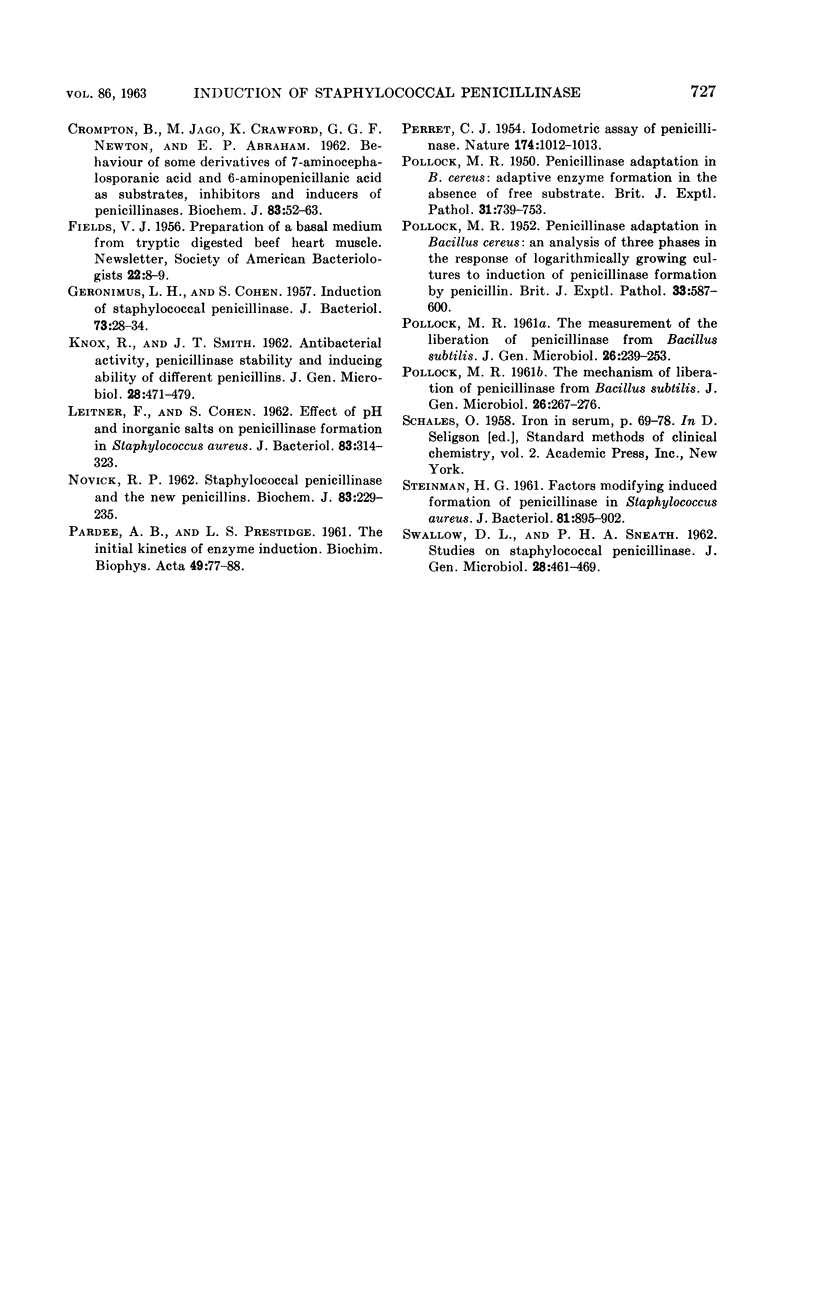
Selected References
These references are in PubMed. This may not be the complete list of references from this article.
- BATCHELOR F. R., CAMERON-WOOD J., CHAIN E. B., ROLINSON G. N. 6-Aminopenicillanic acid. V. 6-Aminopenicillanic acid as a substrate for penicillinase and an inducer of penicillinase formation. Proc R Soc Lond B Biol Sci. 1961 Aug 15;154:514–521. doi: 10.1098/rspb.1961.0049. [DOI] [PubMed] [Google Scholar]
- COOPER P. D. The site of action of penicillin: some changes in Staphylococcus aureus during the first two hours growth in penicillin media. J Gen Microbiol. 1955 Aug;13(1):22–38. doi: 10.1099/00221287-13-1-22. [DOI] [PubMed] [Google Scholar]
- CROMPTON B., JAGO M., CRAWFORD K., NEWTON G. G., ABRAHAM E. P. Behaviour of some derivatives of 7-aminocephalosporanic acid and 6-aminopenicillanic acidas substrates, inhibitors and inducers of penicillinases. Biochem J. 1962 Apr;83:52–63. doi: 10.1042/bj0830052. [DOI] [PMC free article] [PubMed] [Google Scholar]
- GERONIMUS L. H., COHEN S. Induction of staphylococcal penicillinase. J Bacteriol. 1957 Jan;73(1):28–34. doi: 10.1128/jb.73.1.28-34.1957. [DOI] [PMC free article] [PubMed] [Google Scholar]
- KNOX R., SMITH J. T. Antibacterial activity, penicillinase stability and inducing ability of different penicillins. J Gen Microbiol. 1962 Jul;28:471–479. doi: 10.1099/00221287-28-3-471. [DOI] [PubMed] [Google Scholar]
- LEITNER F., COHEN S. Effect of pH and inorganic salts on penicillinase formation in Staphylococcus aureus. J Bacteriol. 1962 Feb;83:314–323. doi: 10.1002/path.1700830139. [DOI] [PMC free article] [PubMed] [Google Scholar]
- NOVICK R. P. Staphylococcal penicillinase and the new penicillins. Biochem J. 1962 May;83:229–235. doi: 10.1042/bj0830229. [DOI] [PMC free article] [PubMed] [Google Scholar]
- PARDEE A. B., PRESTIDGE L. S. The initial kinetics of enzyme induction. Biochim Biophys Acta. 1961 Apr 29;49:77–88. doi: 10.1016/0006-3002(61)90871-x. [DOI] [PubMed] [Google Scholar]
- PERRET C. J. Iodometric assay of penicillinase. Nature. 1954 Nov 27;174(4439):1012–1013. doi: 10.1038/1741012a0. [DOI] [PubMed] [Google Scholar]
- POLLOCK M. R. Penicillinase adaptation in B. cereus; adaptive enzyme formation in the absence of free substrate. Br J Exp Pathol. 1950 Dec;31(6):739–753. [PMC free article] [PubMed] [Google Scholar]
- POLLOCK M. R. Penicillinase adaptation in Bacillus cereus; an analysis of three phases in the response of logarithmically growing cultures to induction of penicillinase formation by penicillin. Br J Exp Pathol. 1952 Dec;33(6):587–600. [PMC free article] [PubMed] [Google Scholar]
- POLLOCK M. R. The measurement of the liberation of penicillinase from Bacillus subtilis. J Gen Microbiol. 1961 Oct;26:239–253. doi: 10.1099/00221287-26-2-239. [DOI] [PubMed] [Google Scholar]
- POLLOCK M. R. The mechanism of liberation of penicillinase from Bacillus subtilis. J Gen Microbiol. 1961 Oct;26:267–276. doi: 10.1099/00221287-26-2-267. [DOI] [PubMed] [Google Scholar]
- SWALLOW D. L., SNEATH P. H. Studies on staphylococcal penicillinase. J Gen Microbiol. 1962 Jul;28:461–469. doi: 10.1099/00221287-28-3-461. [DOI] [PubMed] [Google Scholar]
- Steinman H. G. FACTORS MODIFYING INDUCED FORMATION OF PENICILLINASE IN STAPHYLOCOCCUS AUREUS. J Bacteriol. 1961 Jun;81(6):895–902. doi: 10.1128/jb.81.6.895-902.1961. [DOI] [PMC free article] [PubMed] [Google Scholar]


